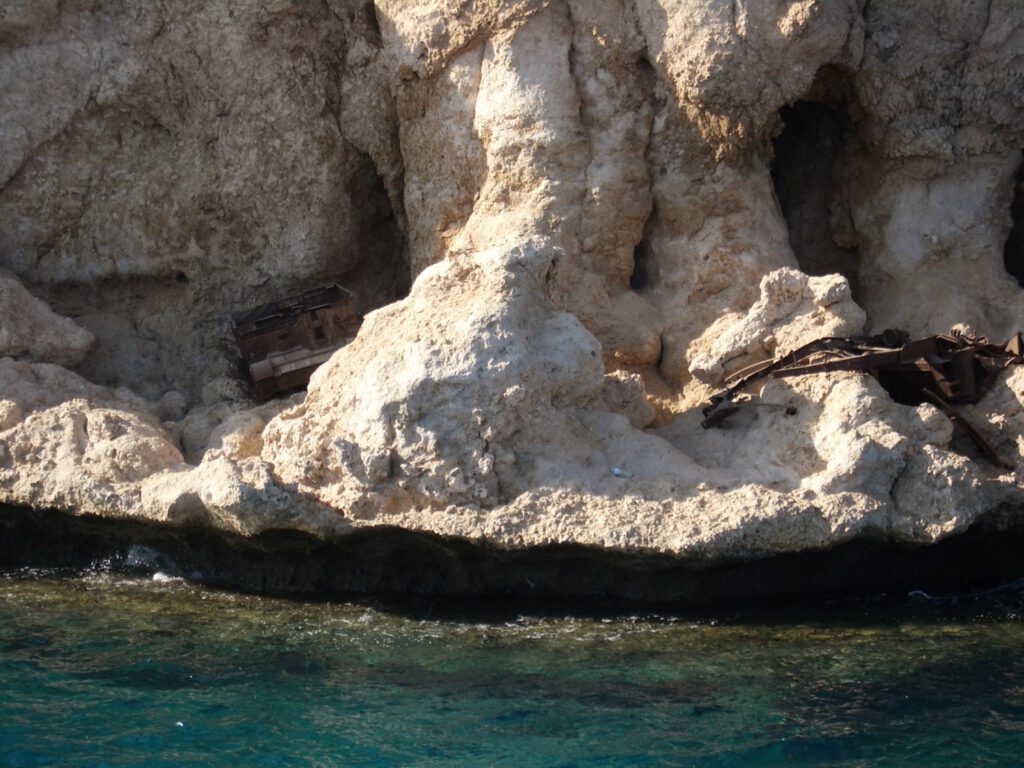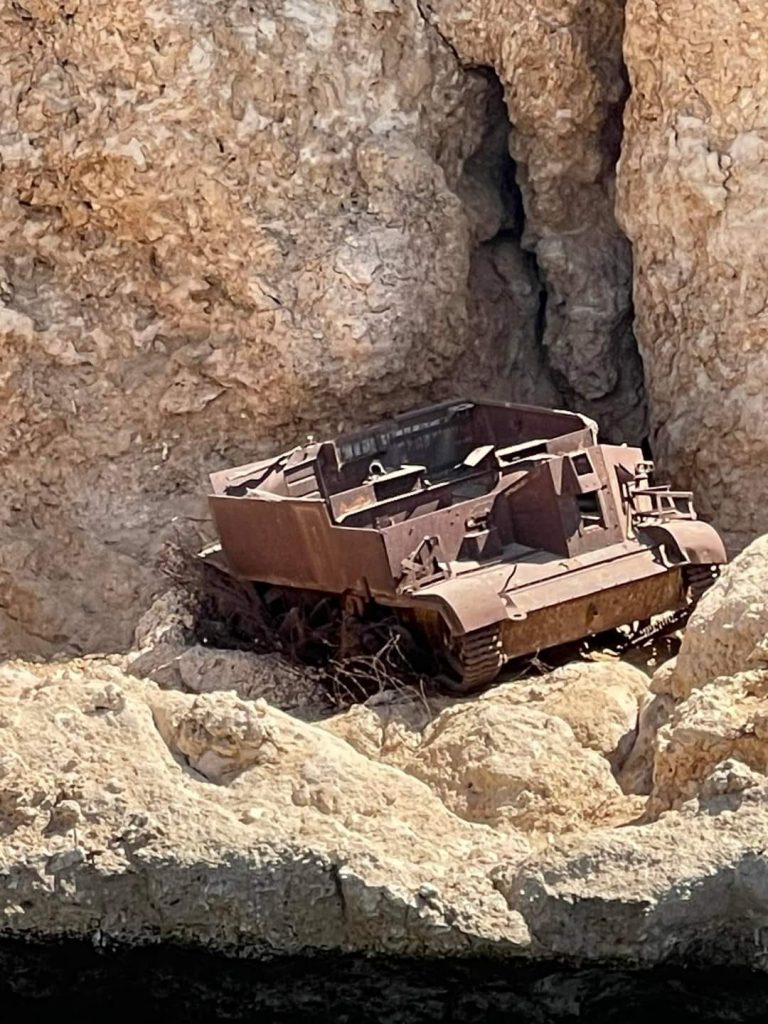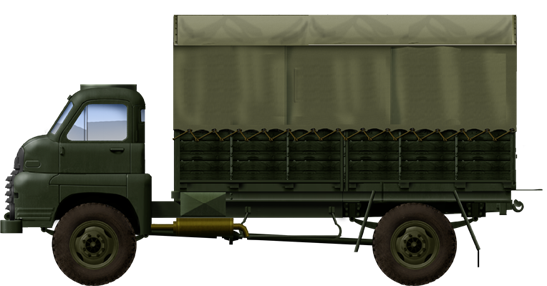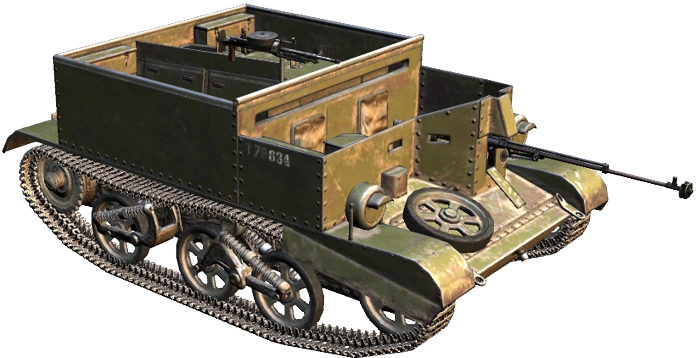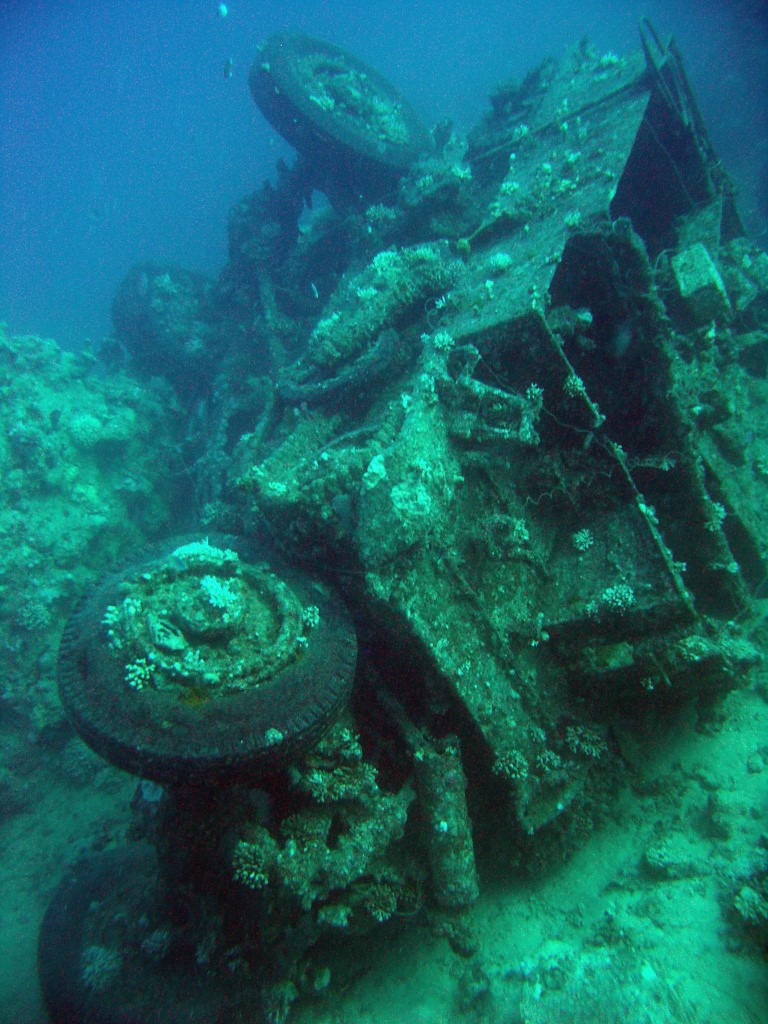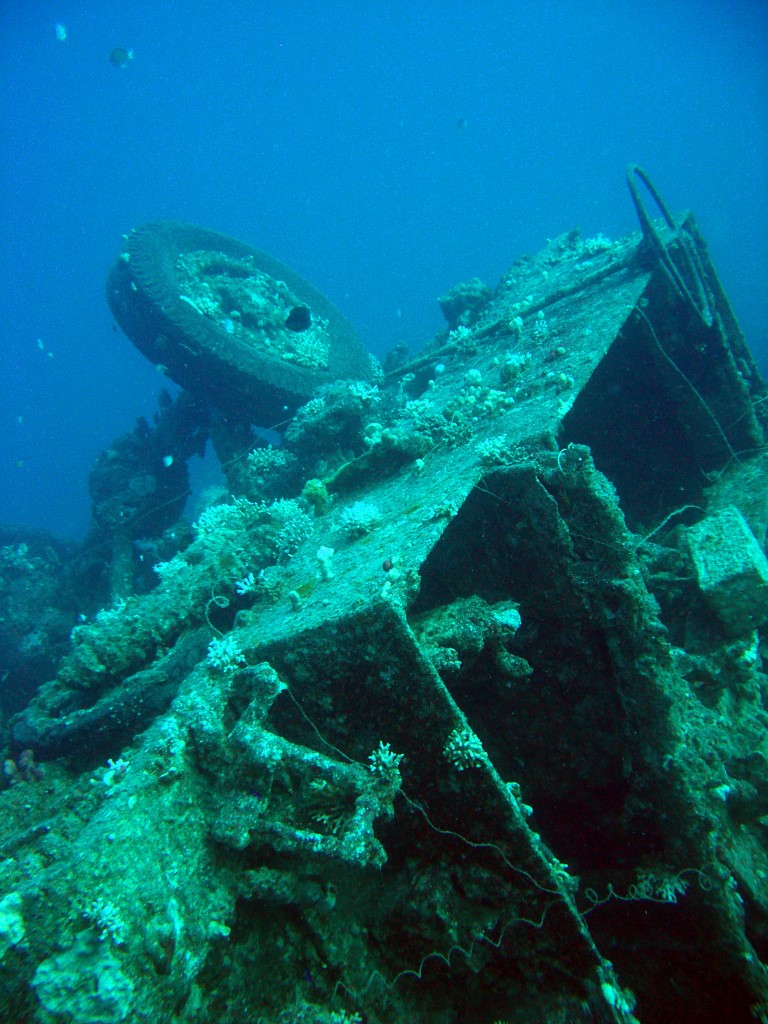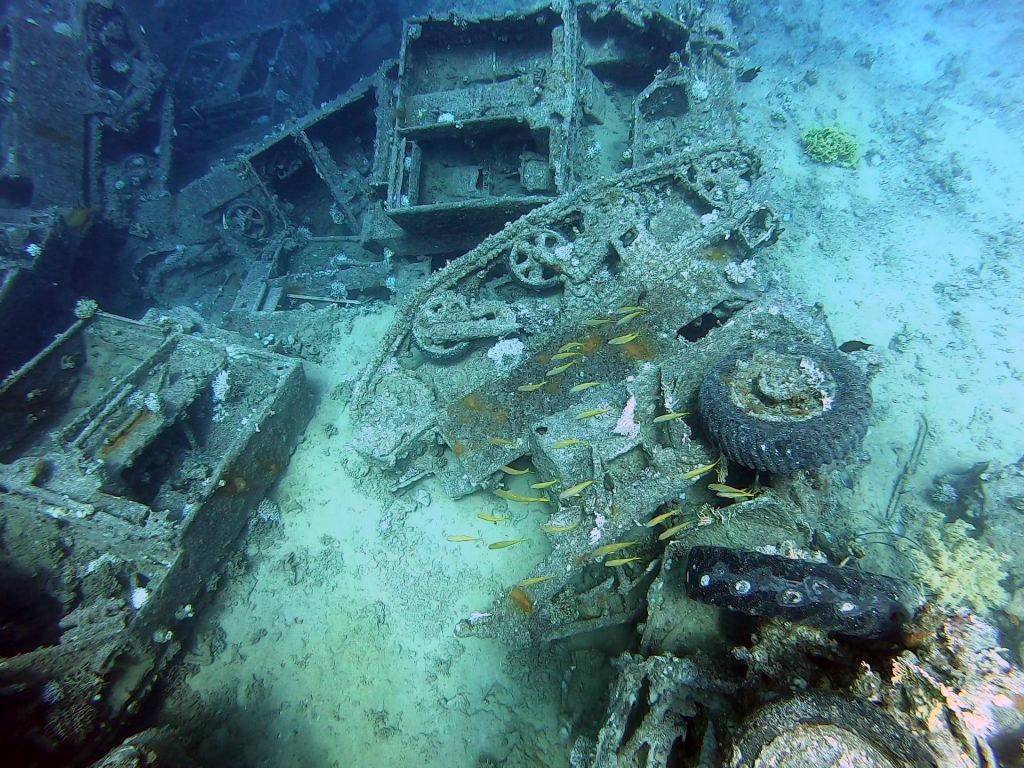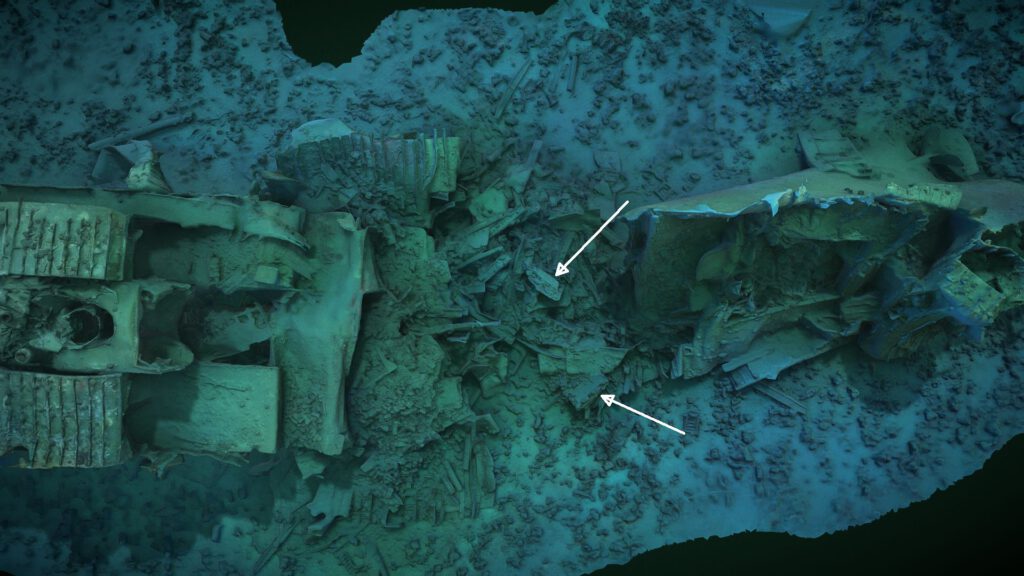Unversal Carriers / Ras Peter / Tank Garden / Tank wreck site
(Sharm el Sheikh - Egypt)
The divesite contains a “Tank Graveyard” near the Travco Harbour in Sharm el Sheikh
At this dive spot you find between 15m and 40m different vehicles of the Second World War – such as universal carriers, tanks, trucks and jeeps. The first remains can be already seen from just below the surface.

Unversal Carriers / Ras Peter / Tank Garden / Tank wreck site (Sharm el Sheikh - Egypt)
Dive into history at this site, recommended for experienced divers.
Depths range from 34m to 40m, revealing submerged military vehicles and a landmine. Despite corrosion, the vehicles remain remarkably intact, with some upright.
Coral growth is minimal, so it’s for dvers nly and not interesting for snorklers.
NOTE: We make use of “Sketchfab” click HERE to view the navigation controls
Click on the 3D model below to move it around
All credits to the above Photogrammetry model goes out to Holger Buss
The story & the dive
The story
Very little is known about the tank graveyard, an abandoned trove of British-made military trucks and equipment in Ras Peter, Sharm el Maya, at the bay entrance of the Sharm el Sheikh Port, used by international cruise ships.
Around 5 “Bedford trucks” and 30 “Bren Carrier MK-1” tanks, also called a Universal Carrier were dumped in the sea here.
The tanks, armoured personnel-carriers, were 3.7m long, 2.1m wide and weighed about 4 tons.
An 85hp petrol engine gave them a top speed of about 30mph. The crew consisted of three or four infantrymen in the body of the vehicle and a driver and a machine-gunner in the cabin.
The vehicle had no roof, and its metal sides protected only the lower part of the crew’s bodies (the cabin had a lowered floor) while the driver and gunner had only their heads exposed.
The “Bren Carrier” tanks would also tow loaded trailers and light artillery pieces.
The Bedford truck was the British military’s main medium lorry (4-ton truck), built by Bedford, from the mid-1950s until the late 1960s.
The military version had all wheel drive and bigger wheels to increase ground clearance.The trucks were powered by a 4.9 litres (299.0 cu in) petrol engine producing 110 brake horsepower (82 kW; 112hp), although some were fitted with diesel engines.
Also other vehicles from soviet-egyptian origin, were dumped into the sea in March 1957 after the Suez Crisis, when the Israeli forces were leaving Egypt. While they were evacuating they got rid of vessels that they couldn’t keep.
The other vehicles were dumpt later
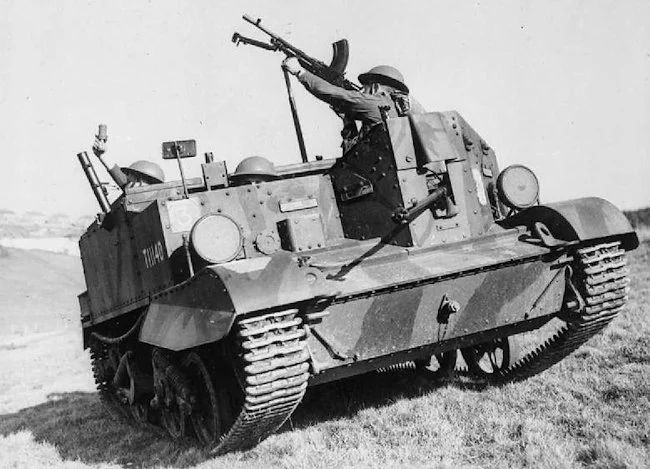
Bren Carrier MK-1
(Click to enlarge)
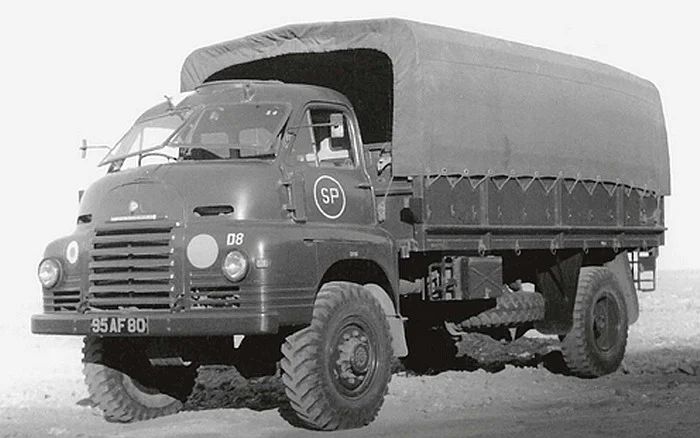
The militairy Bedford
(Click to enlarge)
The divesite
It is an interesting historical dive site.
It is a deep drift dive that is recommended for advanced divers.
The average depth is around 34 m (avg) to 40 m (max).
At this depht you can explore a host of submerged military tracked vehicles and support vehicles together with an unexploded landmine.
But don’t expect to see any guns they were removed almost 60 years ago. You will find the first vehicle at a depth of 6 m. The deeper machines are overlapping each other in some places, so it is difficult to sort out what is what.
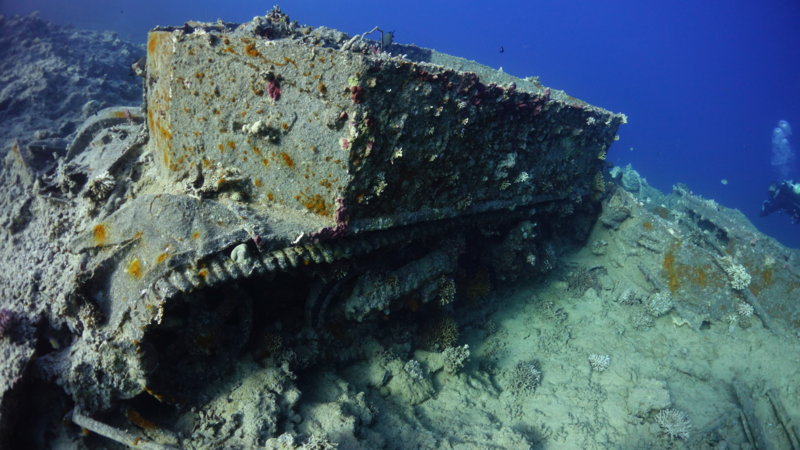
(Click to enlarge)
Closer to the surface, it is easier to distinguish individual vehicles.
Some of them lay with their caterpillar tracks uppermost, some lay on their sides but others remained upright on their tracks.
Some wreck pieces still remain on top of the reef, which makes it easy to recognize the dive site.
Of those still under water the finer details have almost been dissolved by corrosion but the bodies and caterpillar tracks remain in quite good condition.
Corals haven’t really covered them, and the truck wheels are in particularly good condition, as corals don’t grow on rubber. For now, this underwater museum remains open only for visitors with tanks on their backs.’
You can see spotted Wrasse, Lionfish, Grouper, Triggerfish, Napoleonfish, Schooling bannerfish, and Moray Eel on this site.
The Unversal Carriers
Believe it or not, but this belonged to the cargo of the Thistlegorm!
You might know the two ‘tanks’ at the SS THISTLEGORM wreck. Actually there were quite a lot on board when it sunk. During the Second World War, they were lifted up from the wreck and got repaired.
These British “Universal carrier” aka “Bren gun carrier” were armored personnel carriers.
The nickname “Bren carrier” came from Bren light machine gun placed on the right from drivers site, it shot trough a narrow slit.
The gun could be removed and used by foot soldier as standard lmg. Bren carrier carried typically four men and/or equipments, it could also tow a 57mm anti-tank gun.
In 1967, during the six days war, they were dumped off a cliff into the water to prevent falling into the hands of the Israelis.
Now they lie in a depth of around 6 – 40m. The tank Graveyard is close to the Travco Harbour in Sharm el Sheikh. I counted 5 “Bedford trucks” and 32 “Bren Carrier MK-1” tanks. Don’t miss this underwater museum when you are close to Sharm.
Peter Collings compared their serial numbers to the cargo of the Thistlegorm and proved that they were really on that ship. I counted 29 of them. One is still resting on the cliff. I scanned the area some days ago during our wreck dive Safari.
Conclusion
Besides the wrecks there is not much flora and fauna to admire.
The ‘standard’ Red Sea inhabitants are of course present, think of groupers, triggerfish, bannerfish, moray eels and lionfish.
There is also a variaty of hard corals around.
So the main attraction is the wrecks
It’s an easy but deep dive. There can also be a fair current now and then, keep this in mind.


